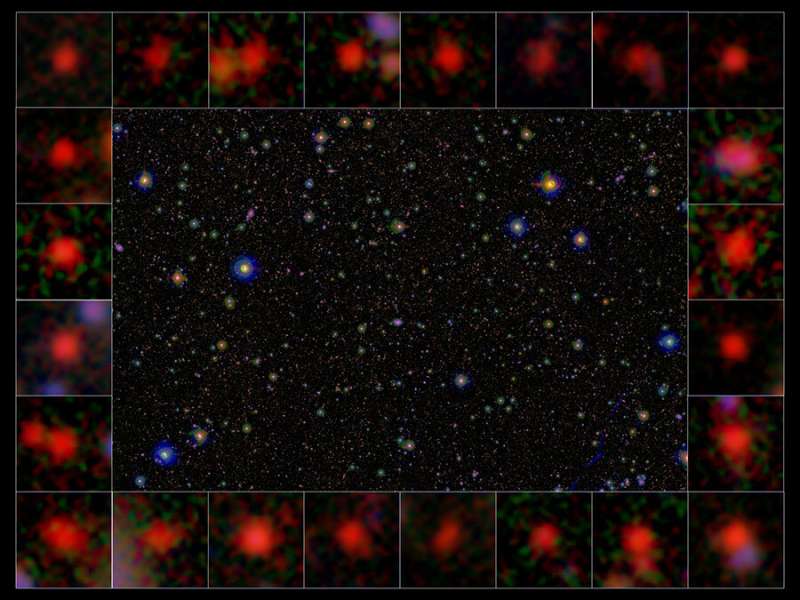
The signal from the active supermassive black holes in the early universe was detected by a database combining observations from the best telescopes in the world. The appearance of these active black holes correlate with changes in the host galaxy, suggesting that a black hole could have far-reaching effects on the evolution of its host galaxy.
The stars in the Milky Way are still forming. All of the stars are the same age in elliptical galaxies. This shows that elliptical galaxies had a period of prolific star formation that ended abruptly. Why this star formation stopped in some galaxies is not well understood. There is a chance that a black hole could disrupt the gas in some galaxies and make them unsuitable for star formation.
Astronomers look at distant galaxies to test the theory. It takes time for light to travel across the void of space. It took 10 billion years for the light we see from an object 10 billion light-years away to reach Earth. The light we see today shows what the galaxy looked like 10 billion years ago. It's like looking back in time. The intervening distance makes it difficult to study distant galaxies.
The international team led by Kei Ito at SOKENDAI in Japan used the Cosmic Evolution Survey to sample the universe. The data taken by world leading telescopes are included in COSMOS. Radio wave, visible light, and X-ray data are included.
The team used data from both optical and IR to identify two groups of galaxies: those with ongoing star formation and those where star formation has stopped. The signal-to- noise ratio of the X-ray and radio wave data was not strong enough to identify individual galaxies. The team combined the data for different galaxies to create higher signal to noise ratio images. The X-ray and radio emissions were confirmed in the averaged images.
This is the first time such emissions have been found for distant galaxies. The results show that the X-ray and radio emissions are too strong to be explained by the stars in the galaxy alone. The black hole activity signal is not as strong for galaxies where star formation is ongoing.
The results show that an abrupt end to star formation in the early universe is related to increased black hole activity. There is more research that needs to be done.
More information: Kei Ito et al, COSMOS2020: Ubiquitous AGN Activity of Massive Quiescent Galaxies at 0 < z < 5 Revealed by X-Ray and Radio Stacking, The Astrophysical Journal (2022). DOI: 10.3847/1538-4357/ac5aaf Journal information: Astrophysical Journal Citation: Supermassive black holes inside dying galaxies detected in early universe (2022, May 27) retrieved 27 May 2022 from https://phys.org/news/2022-05-supermassive-black-holes-dying-galaxies.html This document is subject to copyright. Apart from any fair dealing for the purpose of private study or research, no part may be reproduced without the written permission. The content is provided for information purposes only.